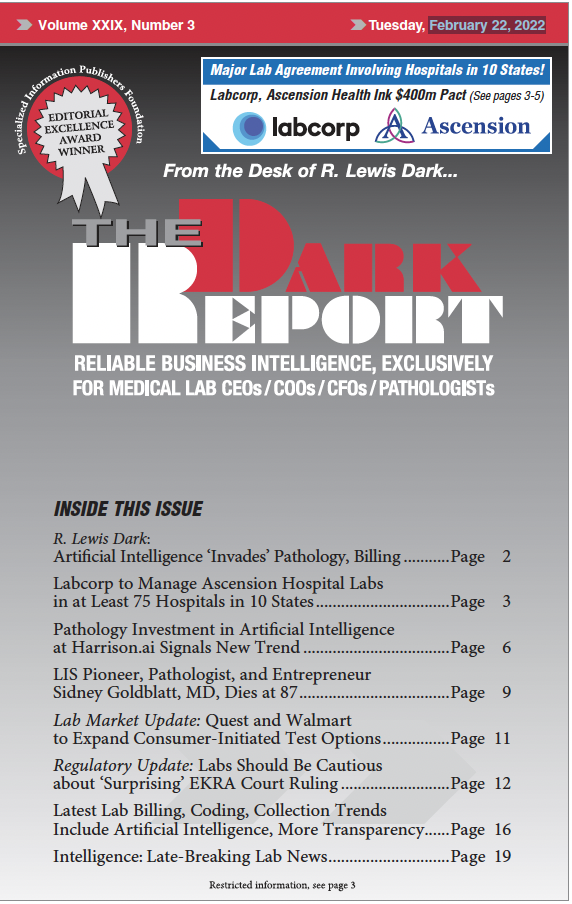CEO SUMMARY: From predictive analytics to data curation to improved online payment options, the newest trends in billing allow clinical laboratories and anatomic pathology groups to boost their financial bottom lines without putting more pressure on patients. Technology is at the core of these developments, particularly software that analyzes and curates clinical and patient data. …
Latest Lab Billing Trends Are AI, More Transparency Read More »
To access this post, you must purchase The Dark Report.


